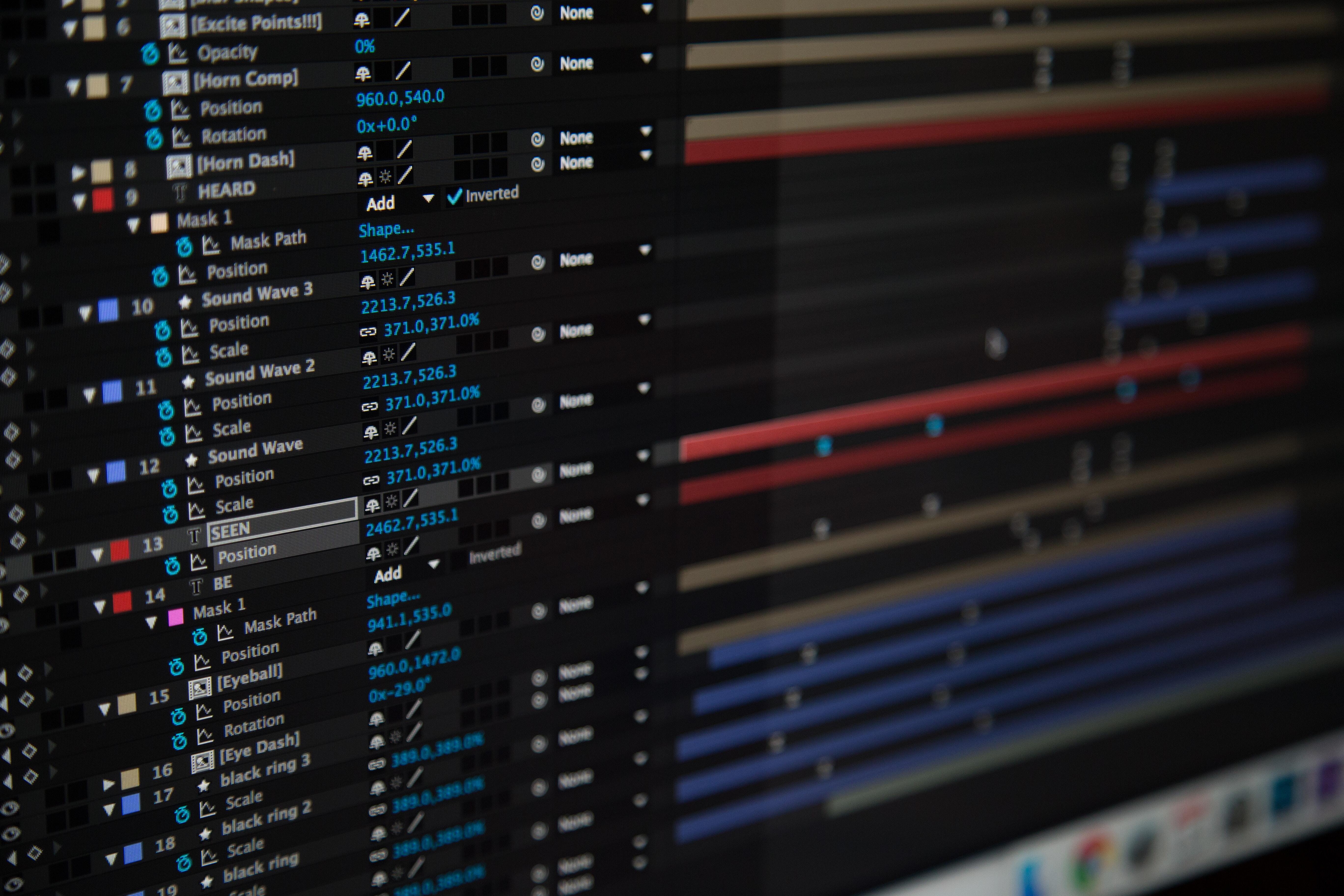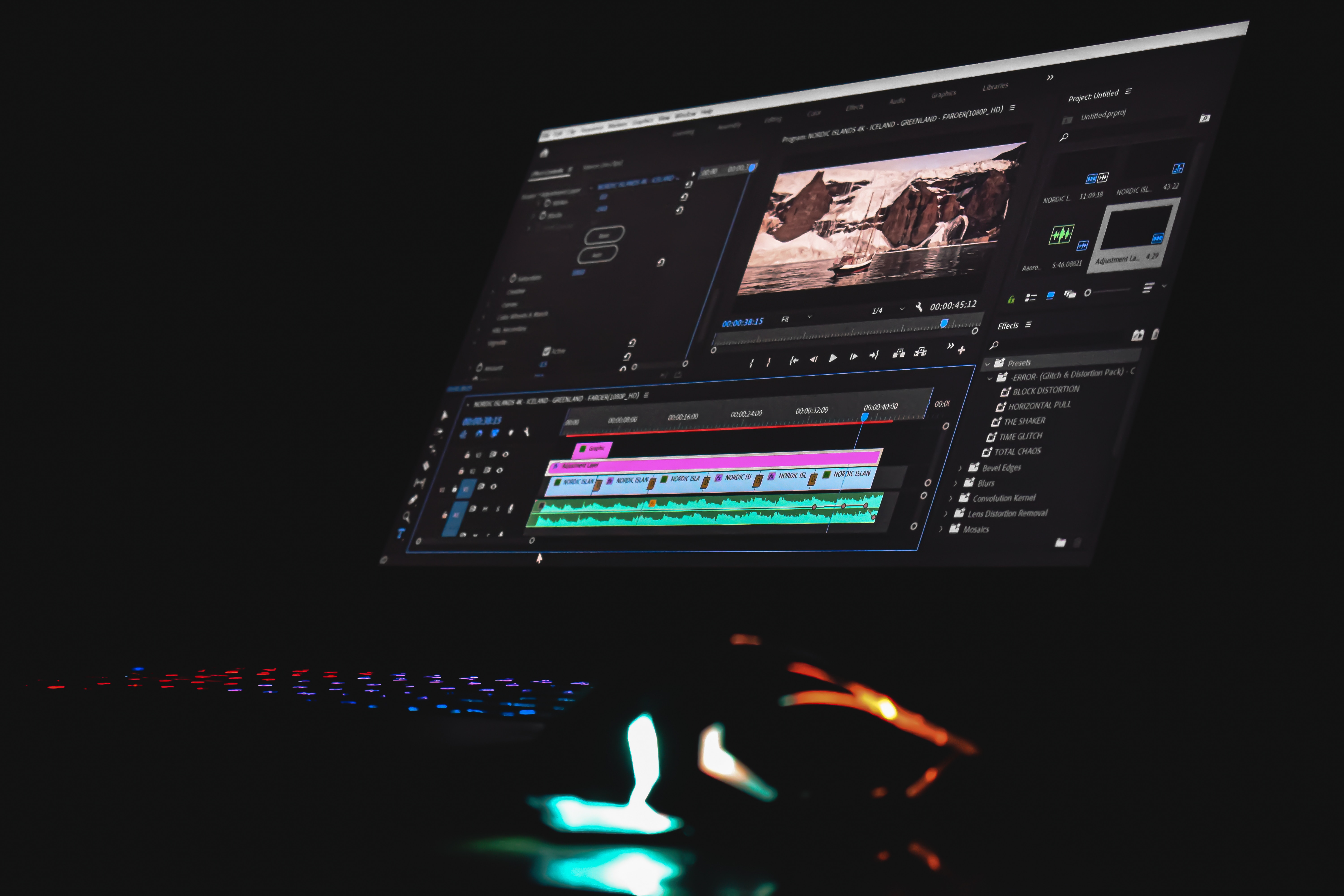Motion graphics and animation are often confused, even within video editing and animation design platforms. While many of their practices and terminology are interchangeable, it's still critical to understand the difference between animation and motion graphics videos.
The biggest distinction is their functioning, as animated videos usually serve narrative purposes, while motion graphics often meet practical, text-based needs. So, when you go see a big blockbuster, the animation can be found in the CGI, while the motion graphics appear in the titles and credits.
However, the elements, functions, and benefits of motion and animated graphics go far beyond what you see on screen. Continue reading to learn the most significant differences between motion graphics vs. animation.
What Are Motion Graphics?
Motion graphics describe almost any visual graphics that are given movement, including logos in commercials and transitions in presentation software. By breaking the stillness of the static image, motion graphic design can make charts, ads, instructional videos, and various art forms explode on the screen.
Many motion graphics tools are readily available within Premiere Pro and other editing software. However, not all motion graphics work for all projects. It's up to you to find the ideal elements and styles for your video to grab your viewers' attention effectively.
Types of Motion Graphics
Motion graphics generally fall into three categories: promotional, emotive, and explainer videos. The graphics and practices within these categories are often specialized to fit their relative purposes.
- Promotional videos: These graphics highlight products and services, including their most relevant details. Examples include commercials' sale prices, product logos, and contact information.
- Explainer videos: Like lists in a PowerPoint presentation, graphics in explainer videos help spotlight the critical information and steps in informational content. These typically consist of extensive text or relevant graphics, such as blueprints, maps, and historical images.
- Emotive videos: These video graphics play off of your project's emotions and can serve endless purposes. For example, the titles in movie trailers use specialized fonts, colors, and motion speeds to define the film's tone and make you feel a certain way.
Benefits of Motion Graphics
The different motion graphics and practices benefit projects in various ways. However, their overall purpose is often to draw attention to particular details. Next time you watch a movie or TV ad, watch what happens to their various text boxes, such as "COMING THIS SUMMER." These 3D motion graphics often inch forward on the screen, even for the half-second they're visible, to ensure viewers actually notice and read them.
In explainer videos, moving graphics can help keep viewers focused throughout the entire video, especially if there isn't much activity otherwise. For example, as you list essential tools for a project, a text graphic for each item can slide onto the side of the screen, helping viewers retain the new information.
Elements of Motion Graphics
Both the movement and design in motion graphics need to be eye-catching for it to seamlessly pop on screen. Some of the best yet simplest motion graphics comprise different elements, such as fonts, shadows, and zooms.
Fortunately, you don't always need to work with graphic designers to give your videos that extra pop. The next time you feel creative, try playing with the following motion graphic elements:
- Typography and font
- Infographics
- Opacity
- Color and shading
- Shapes and additional graphics
- Motion speed
- Consistent motion, like with GIFs
- Timing

What Is Animation?
As a whole, animation is the use of images to create motion on the screen, ranging from traditional hand-drawn projects to advanced motion graphics. However, because it pertains to content creation, animation describes computerized or otherwise artificialized motion for narrative and entertainment purposes.
Types of Animation
Many animation styles and forms have developed throughout the past century, though digital and 3D animation now dominate most of the industry. Certain types of animations focus on unique styles and visualization, while others focus on particular types of motion, such as characters and landscapes.
The type of animation you use in your video projects may fall into the following categories:
- Keyframe and computer animation
- 3D modeling
- Rotoscoping
- Pixilation
- Computer graphic imagery (CGI) and visual effects
- Anime
- Experimental animation
- Whiteboard and typography animation
- Hand-drawn and traditional animation
- Stop motion, claymation, and graphic animation
Benefits of Animation
From a marketing perspective, animated characters and graphics help catch viewers' attention, especially children. Beyond that, moving animations can help your project achieve visuals and narratives you couldn't otherwise create.
Once you have more experience, animation lets you play with video as an art form, whether you want to add birds to an empty wide shot or create an entirely new character. In movies and TV, animation lets you tell unique stories, achieve the impossible, and retain more creative control, particularly over designs.
Elements of Animation
Have you ever wondered why the credits of animated movies are always so long and packed? Animation is an intensely complicated process with countless layers and assets within every frame, often with unique animators dedicated to each one. Fortunately, most cartoon animation makers and other graphics software simplify this by specializing in particular styles.
Below are just a few animation elements you should be aware of:
- Graphics' size and quality
- Staging
- Squash and stretch
- Primary and secondary action timing
- Character movement, including limbs, lips, and speed
- Exaggeration of motion
- Background elements, including colors, subjects, and motion
Key Takeaways: When Should You Use Each?
In many ways, the difference between motion graphics and animation comes down to how they're utilized. However, both have unique practices often exclusive to specific functions, including text, characters, and informational presentations.
Most informational and vlog content creators use basic motion graphics, such as logos and legacy titles. However, even if you aren't studying to be an animation designer, these skills may still benefit your videos through fun graphics and catchy intros.
Elevate Your Video Production With Royalty-Free Stock Music
Animation and motion graphic design strategies can significantly improve your content, but visual elements aren't all that matter. Now that you understand the key differences between motion graphics vs. animation, you should find royalty-free music resources to make your content stand out.
Visit Stockmusic.net's expansive library to find the right audio for your project.




